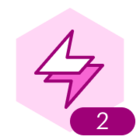Hello Team,
I am working on a project to extract process flow data from Lucidchart diagrams using the Lucid REST API.
My Goal:
To accurately reconstruct the complete process flow, including annotations provided by Sticky Notes.
The Blocker:
My current data extraction process successfully captures connected shapes and lines. However, many of our diagrams use Sticky Notes that are visually near, but not formally connected by lines, to flow elements. Since these sticky notes are not connected, they are completely missed when I traverse the diagram data extracted via the API.
My Question:
When using the Lucid REST API, how can I access or associate Sticky Notes that are not physically connected to other shapes in the diagram, so that I can include them in my extracted flow data?
Any guidance on accessing these unconnected items via the API would be greatly appreciated.



